Are you concerned about your online privacy? Take control of your browser privacy settings. By disabling or limiting cookies, controlling third-party tracking, and managing website permissions, you can safeguard your personal information.
Enable 'Do Not Track' features and use private browsing modes for added protection. Clear your browsing history and cache regularly, manage autofill and form data, and block location tracking to stay one step ahead. Don't let your information fall into the wrong hands – take charge of your browser privacy today.
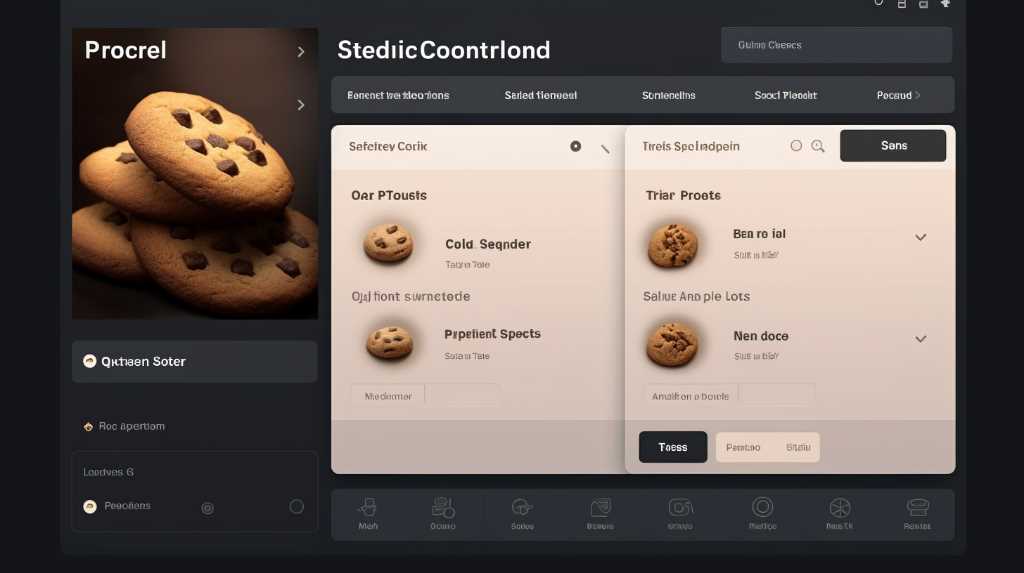 To enhance your online privacy, you can start by disabling or limiting cookies on your browser. Cookies are small files that websites store on your computer to track your online activities. While they can be useful for remembering your login information or preferences, they can also be used to collect and track your personal data without your consent. By disabling or limiting cookies, you can take control of your online privacy and protect your personal information.
To disable or limit cookies on your browser, you can start by accessing your browser settings. In most browsers, you can find this option under the 'Privacy' or 'Security' section. Once you're in the settings, you can choose to block all cookies or only allow them from certain websites. Blocking all cookies may affect your browsing experience, as some websites rely on cookies to function properly. However, by allowing cookies only from trusted websites, you can strike a balance between privacy and convenience.
It's important to note that disabling or limiting cookies is just one step towards enhancing your online privacy. Other measures, such as using a virtual private network (VPN) or regularly clearing your browsing history, can further protect your personal information. By taking these precautions, you can enjoy a safer and more private browsing experience.
To enhance your online privacy, you can start by disabling or limiting cookies on your browser. Cookies are small files that websites store on your computer to track your online activities. While they can be useful for remembering your login information or preferences, they can also be used to collect and track your personal data without your consent. By disabling or limiting cookies, you can take control of your online privacy and protect your personal information.
To disable or limit cookies on your browser, you can start by accessing your browser settings. In most browsers, you can find this option under the 'Privacy' or 'Security' section. Once you're in the settings, you can choose to block all cookies or only allow them from certain websites. Blocking all cookies may affect your browsing experience, as some websites rely on cookies to function properly. However, by allowing cookies only from trusted websites, you can strike a balance between privacy and convenience.
It's important to note that disabling or limiting cookies is just one step towards enhancing your online privacy. Other measures, such as using a virtual private network (VPN) or regularly clearing your browsing history, can further protect your personal information. By taking these precautions, you can enjoy a safer and more private browsing experience.
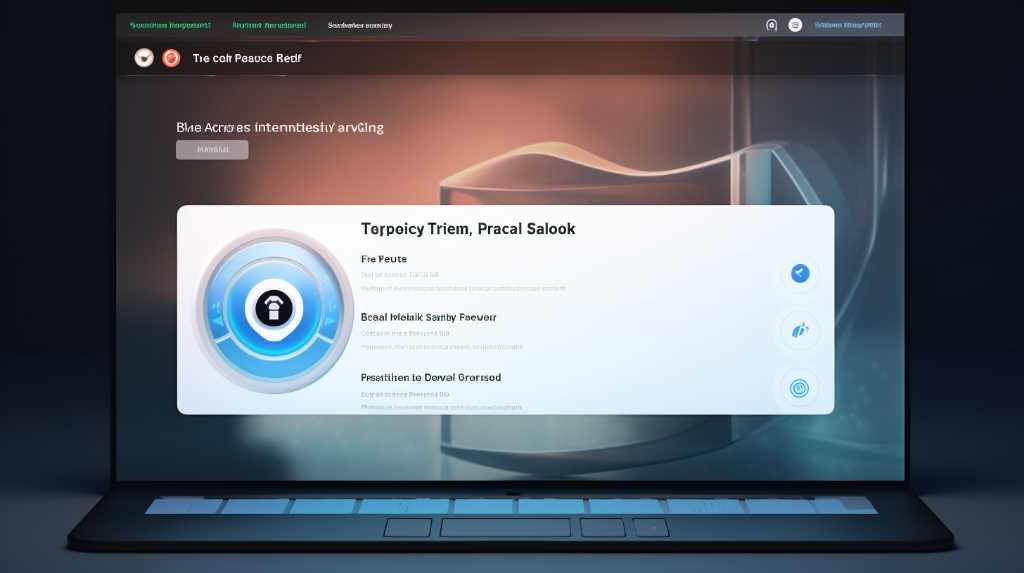 Now let's talk about controlling third-party tracking. One way to do this is by blocking third-party cookies, which can help prevent websites from tracking your activity across different sites. Additionally, you can opt-out of tracking by using features like 'Do Not Track' or by adjusting your browser settings to limit the information shared with third-party advertisers. Taking these steps can give you more control over your online privacy.
Now let's talk about controlling third-party tracking. One way to do this is by blocking third-party cookies, which can help prevent websites from tracking your activity across different sites. Additionally, you can opt-out of tracking by using features like 'Do Not Track' or by adjusting your browser settings to limit the information shared with third-party advertisers. Taking these steps can give you more control over your online privacy.
 Now let's discuss managing website permissions in your browser. When it comes to privacy versus convenience, you have the power to customize which websites can access your information.
Now let's discuss managing website permissions in your browser. When it comes to privacy versus convenience, you have the power to customize which websites can access your information.
 If you want to protect your online privacy, you should enable the 'Do Not Track' feature in your browser settings. This feature is designed to prevent websites from tracking your online activities and collecting your personal information. By enabling 'Do Not Track', you send a signal to websites requesting them not to track your browsing behavior. Although this feature isn't a guarantee that websites will comply, it serves as a proactive step towards safeguarding your privacy.
Enabling 'Do Not Track' is relatively easy and can be done in most popular web browsers. To enable it in Google Chrome, for example, you can go to the browser's settings and click on 'Privacy and security'. From there, you can toggle the 'Send a 'Do Not Track' request with your browsing traffic' option.
It is important to note that while enabling 'Do Not Track' can help protect your privacy, it isn't foolproof. Some websites may choose to ignore this request and continue tracking your activities. Additionally, 'Do Not Track' only applies to websites that have agreed to honor the request, which means that not all websites will respect it.
If you want to protect your online privacy, you should enable the 'Do Not Track' feature in your browser settings. This feature is designed to prevent websites from tracking your online activities and collecting your personal information. By enabling 'Do Not Track', you send a signal to websites requesting them not to track your browsing behavior. Although this feature isn't a guarantee that websites will comply, it serves as a proactive step towards safeguarding your privacy.
Enabling 'Do Not Track' is relatively easy and can be done in most popular web browsers. To enable it in Google Chrome, for example, you can go to the browser's settings and click on 'Privacy and security'. From there, you can toggle the 'Send a 'Do Not Track' request with your browsing traffic' option.
It is important to note that while enabling 'Do Not Track' can help protect your privacy, it isn't foolproof. Some websites may choose to ignore this request and continue tracking your activities. Additionally, 'Do Not Track' only applies to websites that have agreed to honor the request, which means that not all websites will respect it.
 While using private browsing modes, you can browse the internet without leaving behind a trail of your online activities. Private browsing, also known as incognito mode or private mode, is a feature available in most web browsers that allows you to surf the web without saving any browsing history, cookies, or other data.
When you open a private browsing window, the browser creates a separate session that's isolated from your regular browsing session. This means that any websites you visit, files you download, or searches you perform won't be stored in your browser's history or search suggestions. Additionally, any cookies or temporary files that are created during your private browsing session will be automatically deleted when you close the window.
Private browsing can be useful when you want to maintain privacy and prevent others from accessing your browsing history. However, it's important to note that private browsing doesn't make you completely anonymous online. Your internet service provider, employer, or the websites you visit can still track your online activities.
Therefore, if you need to maintain complete anonymity, consider using a Virtual Private Network (VPN) or other privacy tools.
While using private browsing modes, you can browse the internet without leaving behind a trail of your online activities. Private browsing, also known as incognito mode or private mode, is a feature available in most web browsers that allows you to surf the web without saving any browsing history, cookies, or other data.
When you open a private browsing window, the browser creates a separate session that's isolated from your regular browsing session. This means that any websites you visit, files you download, or searches you perform won't be stored in your browser's history or search suggestions. Additionally, any cookies or temporary files that are created during your private browsing session will be automatically deleted when you close the window.
Private browsing can be useful when you want to maintain privacy and prevent others from accessing your browsing history. However, it's important to note that private browsing doesn't make you completely anonymous online. Your internet service provider, employer, or the websites you visit can still track your online activities.
Therefore, if you need to maintain complete anonymity, consider using a Virtual Private Network (VPN) or other privacy tools.
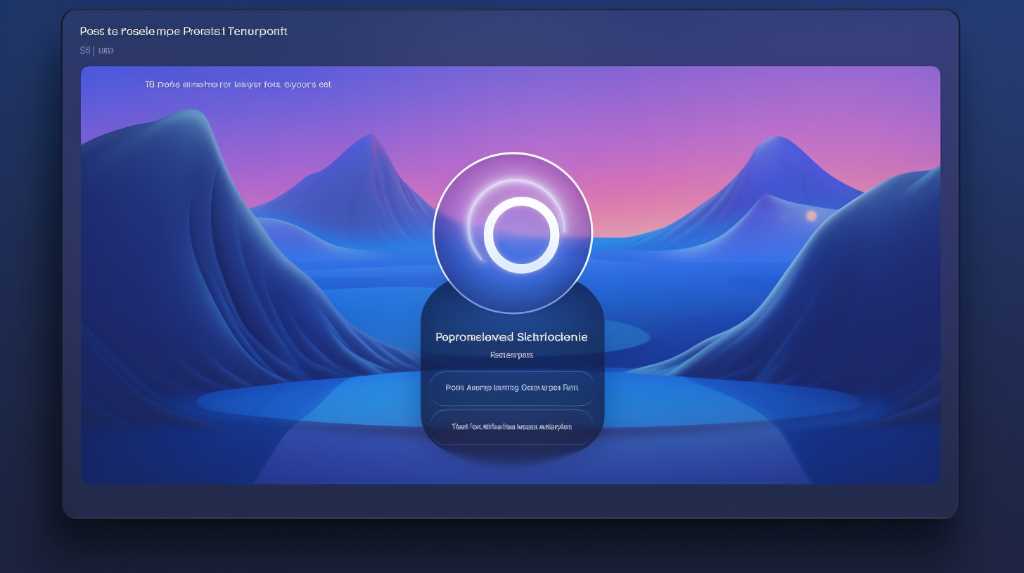 Now it's time to look at blocking pop-up windows in your browser. Pop-up blocker options are an important aspect of browser privacy settings, as they can protect you from unwanted advertisements and potential security threats.
Now it's time to look at blocking pop-up windows in your browser. Pop-up blocker options are an important aspect of browser privacy settings, as they can protect you from unwanted advertisements and potential security threats.
 If you want to protect your privacy while browsing the internet, it's important that you regularly clear your browsing history and cache. Your browsing history includes a record of all the websites you have visited, while the cache stores temporary files and data from websites you have accessed. Clearing both of these can help ensure that your online activities remain private and secure.
When you clear your browsing history, you're essentially deleting the list of websites you have visited. This can be beneficial if you share a computer with others or if you're concerned about your online activities being tracked. By regularly clearing your browsing history, you can prevent others from easily viewing your browsing habits.
In addition to clearing your browsing history, it's also important to clear your cache regularly. The cache stores temporary files, images, and other data from websites you visit. While this can help websites load faster upon subsequent visits, it can also take up valuable storage space on your computer. Clearing your cache not only frees up storage space, but it also helps protect your privacy by removing any potentially sensitive information stored in the cache.
If you want to protect your privacy while browsing the internet, it's important that you regularly clear your browsing history and cache. Your browsing history includes a record of all the websites you have visited, while the cache stores temporary files and data from websites you have accessed. Clearing both of these can help ensure that your online activities remain private and secure.
When you clear your browsing history, you're essentially deleting the list of websites you have visited. This can be beneficial if you share a computer with others or if you're concerned about your online activities being tracked. By regularly clearing your browsing history, you can prevent others from easily viewing your browsing habits.
In addition to clearing your browsing history, it's also important to clear your cache regularly. The cache stores temporary files, images, and other data from websites you visit. While this can help websites load faster upon subsequent visits, it can also take up valuable storage space on your computer. Clearing your cache not only frees up storage space, but it also helps protect your privacy by removing any potentially sensitive information stored in the cache.
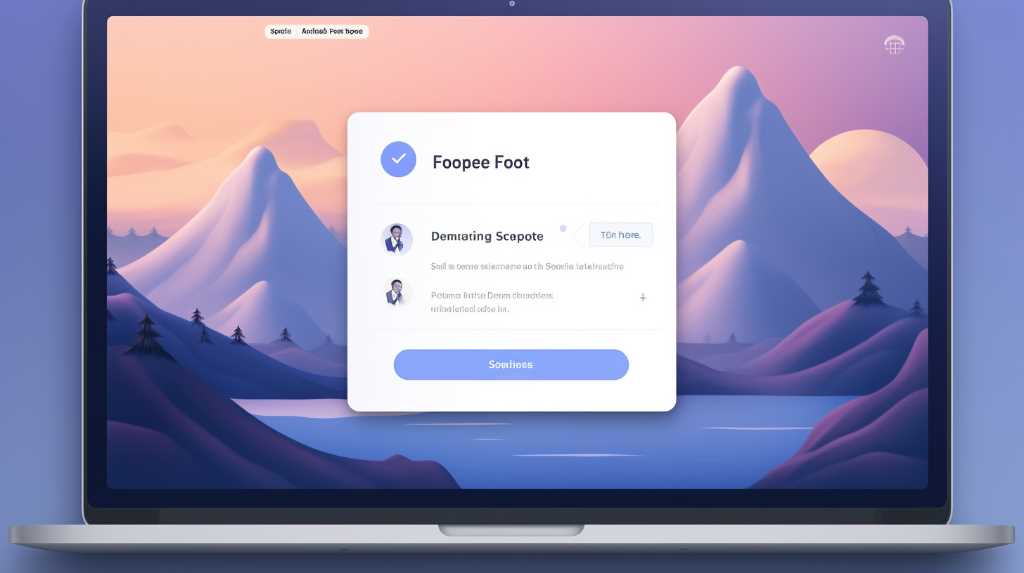 With autofill and form data, you can easily and efficiently fill out online forms and enter information on websites. However, it's important to manage this feature to ensure your privacy and security. Most browsers allow you to control and customize autofill settings to your preferences.
Start by accessing your browser's settings and look for the autofill or form data section. Here, you can choose whether to enable or disable autofill altogether. If you prefer to keep it enabled, you can also manage the specific information that's being stored.
For example, you may want to remove sensitive information such as credit card details or addresses. Additionally, you can edit or delete existing entries to keep your autofill data up to date. Remember to regularly review and update these settings to stay in control of your personal information.
With autofill and form data, you can easily and efficiently fill out online forms and enter information on websites. However, it's important to manage this feature to ensure your privacy and security. Most browsers allow you to control and customize autofill settings to your preferences.
Start by accessing your browser's settings and look for the autofill or form data section. Here, you can choose whether to enable or disable autofill altogether. If you prefer to keep it enabled, you can also manage the specific information that's being stored.
For example, you may want to remove sensitive information such as credit card details or addresses. Additionally, you can edit or delete existing entries to keep your autofill data up to date. Remember to regularly review and update these settings to stay in control of your personal information.
 To enhance your privacy online, you can block location tracking by adjusting your browser settings. Location tracking is a feature that allows websites to determine your physical location using data from your device's GPS, Wi-Fi, or IP address. While some websites may use this information for legitimate purposes such as providing localized content or improving user experience, others may use it for targeted advertising or tracking your online activities.
If you're concerned about your privacy and want to prevent websites from accessing your location data, there are several steps you can take. First, you can disable location services on your device. This will prevent any app or website from accessing your GPS or Wi-Fi data. To do this, go to your device's settings, find the privacy or location settings, and toggle off the location services option. Keep in mind that this will also affect other apps that rely on location data, such as maps or weather apps.
Second, you can adjust your browser settings to block location tracking. Most modern browsers offer options to control how websites can access your location. You can usually find these settings in the privacy or security section of your browser's preferences. Look for an option that allows you to block or deny location requests from websites.
Lastly, you can use browser extensions or add-ons that specifically block location tracking. These extensions work by preventing websites from accessing your location information, even if you haven't disabled location services on your device. There are several popular extensions available for different browsers, so you can choose one that suits your needs.
To enhance your privacy online, you can block location tracking by adjusting your browser settings. Location tracking is a feature that allows websites to determine your physical location using data from your device's GPS, Wi-Fi, or IP address. While some websites may use this information for legitimate purposes such as providing localized content or improving user experience, others may use it for targeted advertising or tracking your online activities.
If you're concerned about your privacy and want to prevent websites from accessing your location data, there are several steps you can take. First, you can disable location services on your device. This will prevent any app or website from accessing your GPS or Wi-Fi data. To do this, go to your device's settings, find the privacy or location settings, and toggle off the location services option. Keep in mind that this will also affect other apps that rely on location data, such as maps or weather apps.
Second, you can adjust your browser settings to block location tracking. Most modern browsers offer options to control how websites can access your location. You can usually find these settings in the privacy or security section of your browser's preferences. Look for an option that allows you to block or deny location requests from websites.
Lastly, you can use browser extensions or add-ons that specifically block location tracking. These extensions work by preventing websites from accessing your location information, even if you haven't disabled location services on your device. There are several popular extensions available for different browsers, so you can choose one that suits your needs.
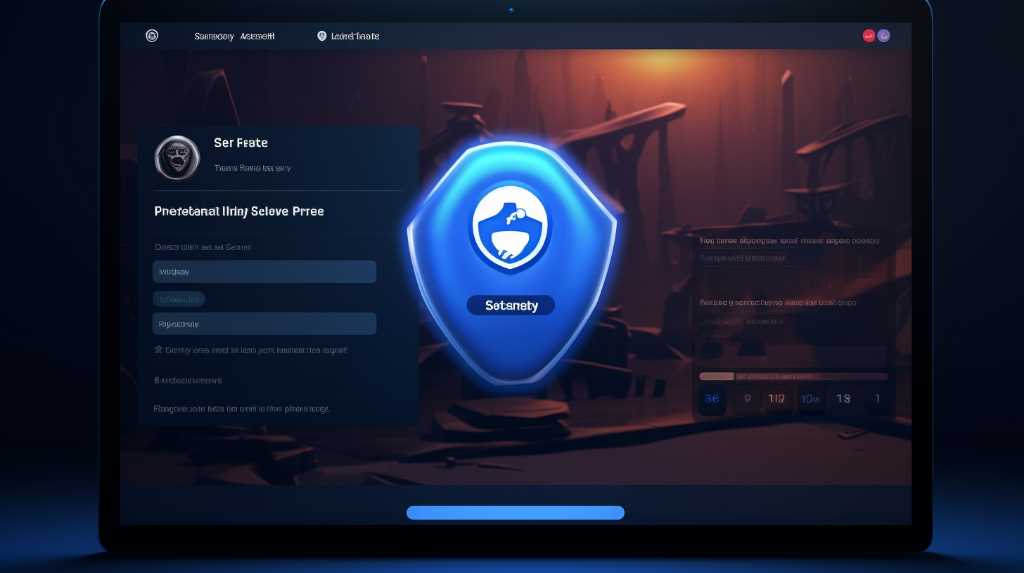 To protect yourself against phishing attacks, be vigilant and cautious when clicking on links or providing personal information online. Phishing attacks are a common method used by hackers to trick individuals into revealing sensitive information such as passwords, credit card numbers, or social security numbers. These attacks often occur through emails, social media messages, or deceptive websites that masquerade as legitimate organizations.
One of the best ways to protect yourself is to verify the legitimacy of the source before clicking on any links. Check for spelling or grammatical errors in the email or message, as these are often signs of a phishing attempt. Additionally, avoid providing personal information to websites that don't have a secure connection. Look for the padlock symbol or 'https' in the website's URL to ensure that your data is encrypted and secure.
It's also important to keep your browser and antivirus software up to date, as they often include phishing protection features.
To protect yourself against phishing attacks, be vigilant and cautious when clicking on links or providing personal information online. Phishing attacks are a common method used by hackers to trick individuals into revealing sensitive information such as passwords, credit card numbers, or social security numbers. These attacks often occur through emails, social media messages, or deceptive websites that masquerade as legitimate organizations.
One of the best ways to protect yourself is to verify the legitimacy of the source before clicking on any links. Check for spelling or grammatical errors in the email or message, as these are often signs of a phishing attempt. Additionally, avoid providing personal information to websites that don't have a secure connection. Look for the padlock symbol or 'https' in the website's URL to ensure that your data is encrypted and secure.
It's also important to keep your browser and antivirus software up to date, as they often include phishing protection features.
Key Takeaways
- Disabling or limiting cookies can enhance online privacy
- Blocking third-party cookies effectively controls third-party tracking
- Enabling 'Do Not Track' feature prevents websites from tracking online activities
- Regularly clearing browsing history and cache helps ensure online activities remain private and secure
Disabling or Limiting Cookies
 To enhance your online privacy, you can start by disabling or limiting cookies on your browser. Cookies are small files that websites store on your computer to track your online activities. While they can be useful for remembering your login information or preferences, they can also be used to collect and track your personal data without your consent. By disabling or limiting cookies, you can take control of your online privacy and protect your personal information.
To disable or limit cookies on your browser, you can start by accessing your browser settings. In most browsers, you can find this option under the 'Privacy' or 'Security' section. Once you're in the settings, you can choose to block all cookies or only allow them from certain websites. Blocking all cookies may affect your browsing experience, as some websites rely on cookies to function properly. However, by allowing cookies only from trusted websites, you can strike a balance between privacy and convenience.
It's important to note that disabling or limiting cookies is just one step towards enhancing your online privacy. Other measures, such as using a virtual private network (VPN) or regularly clearing your browsing history, can further protect your personal information. By taking these precautions, you can enjoy a safer and more private browsing experience.
To enhance your online privacy, you can start by disabling or limiting cookies on your browser. Cookies are small files that websites store on your computer to track your online activities. While they can be useful for remembering your login information or preferences, they can also be used to collect and track your personal data without your consent. By disabling or limiting cookies, you can take control of your online privacy and protect your personal information.
To disable or limit cookies on your browser, you can start by accessing your browser settings. In most browsers, you can find this option under the 'Privacy' or 'Security' section. Once you're in the settings, you can choose to block all cookies or only allow them from certain websites. Blocking all cookies may affect your browsing experience, as some websites rely on cookies to function properly. However, by allowing cookies only from trusted websites, you can strike a balance between privacy and convenience.
It's important to note that disabling or limiting cookies is just one step towards enhancing your online privacy. Other measures, such as using a virtual private network (VPN) or regularly clearing your browsing history, can further protect your personal information. By taking these precautions, you can enjoy a safer and more private browsing experience.
Controlling Third-Party Tracking
 Now let's talk about controlling third-party tracking. One way to do this is by blocking third-party cookies, which can help prevent websites from tracking your activity across different sites. Additionally, you can opt-out of tracking by using features like 'Do Not Track' or by adjusting your browser settings to limit the information shared with third-party advertisers. Taking these steps can give you more control over your online privacy.
Now let's talk about controlling third-party tracking. One way to do this is by blocking third-party cookies, which can help prevent websites from tracking your activity across different sites. Additionally, you can opt-out of tracking by using features like 'Do Not Track' or by adjusting your browser settings to limit the information shared with third-party advertisers. Taking these steps can give you more control over your online privacy.
Blocking Third-Party Cookies
You can easily protect your online privacy by actively blocking third-party cookies, effectively controlling third-party tracking. Third-party cookies are used by advertisers and websites to track your browsing behavior across different sites. By blocking these cookies, you prevent these third parties from collecting your personal information and monitoring your online activities. Most modern browsers provide options to block third-party cookies or limit their functionality. You can access these settings in your browser's privacy or security settings. Once you enable this feature, your browser will reject any third-party cookies, ensuring that your online activities remain private and secure.Opt-Out of Tracking
By frequently using the opt-out feature and coordinating your settings, you can effectively control third-party tracking and ensure your online privacy. Many websites and online platforms use third-party tracking to collect data about your browsing habits and preferences. This information is then used to deliver targeted advertisements and personalize your online experience. However, if you value your privacy and want to limit the amount of data collected about you, opting out of tracking is an important step. Most browsers offer options to opt-out of tracking by default. Additionally, there are various browser extensions and privacy tools available that can help you further control third-party tracking. It's essential to regularly check your browser settings and opt-out preferences to ensure that your online activities remain private and secure.Managing Website Permissions
 Now let's discuss managing website permissions in your browser. When it comes to privacy versus convenience, you have the power to customize which websites can access your information.
Now let's discuss managing website permissions in your browser. When it comes to privacy versus convenience, you have the power to customize which websites can access your information.
Privacy Vs Convenience
Managing website permissions can be a challenge when balancing privacy and convenience. It's important to find a middle ground that allows you to protect your personal information while still enjoying a seamless browsing experience. One way to do this is by carefully managing the permissions you grant to websites. When you visit a new website, your browser may prompt you to allow or block certain permissions, such as accessing your location or sending you notifications. It's tempting to simply click 'Allow' without giving it much thought, but this can compromise your privacy. Take the time to consider whether granting a permission is necessary for the website to function properly, and whether the convenience it offers outweighs the potential privacy risks.Customizing Website Access
When customizing website access, consider adjusting the permissions granted to ensure optimal privacy and browsing control. By managing website permissions, you can have more control over how websites interact with your browser. Start by reviewing the permissions granted to each website you visit. You may want to revoke certain permissions, such as access to your location or camera, if you feel they're unnecessary or invasive. Additionally, you can choose to block cookies or restrict them to certain websites. This helps protect your personal information and prevent targeted advertising. It's also a good idea to regularly review and update your website permissions as your browsing habits and preferences change. Taking these steps will help you customize your browsing experience and maintain your privacy online.Impact on User Experience
To optimize your browsing experience, it's important to manage website permissions effectively. Website permissions allow you to control what information websites can access and how they can interact with your browser. By managing these permissions, you can enhance your online privacy, security, and overall user experience. When you visit a website for the first time, your browser will prompt you to grant or deny certain permissions, such as access to your camera, microphone, or location. It's essential to carefully consider these requests and only grant permissions that are necessary for the website's functionality. This will help protect your personal information and reduce the risk of potential security breaches. Furthermore, managing website permissions can also improve your browsing speed and performance. When you restrict unnecessary permissions, websites will have fewer resources to load and process, resulting in faster page load times and smoother browsing experience.Enabling 'Do Not Track' Features
 If you want to protect your online privacy, you should enable the 'Do Not Track' feature in your browser settings. This feature is designed to prevent websites from tracking your online activities and collecting your personal information. By enabling 'Do Not Track', you send a signal to websites requesting them not to track your browsing behavior. Although this feature isn't a guarantee that websites will comply, it serves as a proactive step towards safeguarding your privacy.
Enabling 'Do Not Track' is relatively easy and can be done in most popular web browsers. To enable it in Google Chrome, for example, you can go to the browser's settings and click on 'Privacy and security'. From there, you can toggle the 'Send a 'Do Not Track' request with your browsing traffic' option.
It is important to note that while enabling 'Do Not Track' can help protect your privacy, it isn't foolproof. Some websites may choose to ignore this request and continue tracking your activities. Additionally, 'Do Not Track' only applies to websites that have agreed to honor the request, which means that not all websites will respect it.
If you want to protect your online privacy, you should enable the 'Do Not Track' feature in your browser settings. This feature is designed to prevent websites from tracking your online activities and collecting your personal information. By enabling 'Do Not Track', you send a signal to websites requesting them not to track your browsing behavior. Although this feature isn't a guarantee that websites will comply, it serves as a proactive step towards safeguarding your privacy.
Enabling 'Do Not Track' is relatively easy and can be done in most popular web browsers. To enable it in Google Chrome, for example, you can go to the browser's settings and click on 'Privacy and security'. From there, you can toggle the 'Send a 'Do Not Track' request with your browsing traffic' option.
It is important to note that while enabling 'Do Not Track' can help protect your privacy, it isn't foolproof. Some websites may choose to ignore this request and continue tracking your activities. Additionally, 'Do Not Track' only applies to websites that have agreed to honor the request, which means that not all websites will respect it.
Using Private Browsing Modes
 While using private browsing modes, you can browse the internet without leaving behind a trail of your online activities. Private browsing, also known as incognito mode or private mode, is a feature available in most web browsers that allows you to surf the web without saving any browsing history, cookies, or other data.
When you open a private browsing window, the browser creates a separate session that's isolated from your regular browsing session. This means that any websites you visit, files you download, or searches you perform won't be stored in your browser's history or search suggestions. Additionally, any cookies or temporary files that are created during your private browsing session will be automatically deleted when you close the window.
Private browsing can be useful when you want to maintain privacy and prevent others from accessing your browsing history. However, it's important to note that private browsing doesn't make you completely anonymous online. Your internet service provider, employer, or the websites you visit can still track your online activities.
Therefore, if you need to maintain complete anonymity, consider using a Virtual Private Network (VPN) or other privacy tools.
While using private browsing modes, you can browse the internet without leaving behind a trail of your online activities. Private browsing, also known as incognito mode or private mode, is a feature available in most web browsers that allows you to surf the web without saving any browsing history, cookies, or other data.
When you open a private browsing window, the browser creates a separate session that's isolated from your regular browsing session. This means that any websites you visit, files you download, or searches you perform won't be stored in your browser's history or search suggestions. Additionally, any cookies or temporary files that are created during your private browsing session will be automatically deleted when you close the window.
Private browsing can be useful when you want to maintain privacy and prevent others from accessing your browsing history. However, it's important to note that private browsing doesn't make you completely anonymous online. Your internet service provider, employer, or the websites you visit can still track your online activities.
Therefore, if you need to maintain complete anonymity, consider using a Virtual Private Network (VPN) or other privacy tools.
Blocking Pop-up Windows
 Now it's time to look at blocking pop-up windows in your browser. Pop-up blocker options are an important aspect of browser privacy settings, as they can protect you from unwanted advertisements and potential security threats.
Now it's time to look at blocking pop-up windows in your browser. Pop-up blocker options are an important aspect of browser privacy settings, as they can protect you from unwanted advertisements and potential security threats.
Pop-Up Blocker Options
Are you wondering how to customize your pop-up blocker options to block pop-up windows? Well, you're in luck! Most modern web browsers provide built-in pop-up blockers that can be easily configured to suit your needs. To access the pop-up blocker options, simply open your browser's settings or preferences menu. Look for the section dedicated to privacy or security settings, where you'll likely find the pop-up blocker options. From there, you can choose whether to block all pop-ups or only certain types, such as those that are considered malicious or intrusive. You may also have the option to whitelist specific websites, allowing their pop-ups to appear while still blocking others.Privacy and User Experience
To enhance your browsing experience, adjust your browser's privacy settings to block pop-up windows. Pop-up windows can be annoying and disruptive, often appearing without your consent and interrupting your online activities. By blocking these pop-ups, you can eliminate distractions and maintain a smoother browsing experience. Most modern browsers offer built-in pop-up blockers that can be easily enabled in the privacy settings. These blockers work by preventing websites from opening new windows or tabs without your permission. This not only enhances your privacy but also protects you from potential scams and malware that may be disguised as pop-up ads. Take control of your browsing experience by configuring your browser's privacy settings to block pop-up windows and enjoy a more seamless and secure online experience.Managing Exceptions and Whitelists
Don't forget to customize your browser's privacy settings and add exceptions to your pop-up blocker, so you can allow certain trusted websites to display pop-up windows when needed. Managing exceptions and whitelists is essential to ensure a smooth browsing experience while still protecting your privacy. When you encounter a website that you trust and want to receive pop-up notifications from, simply add it to your browser's whitelist. This will exempt the website from the pop-up blocker's restrictions, allowing pop-ups from that specific site to appear. By managing exceptions and whitelists, you can strike a balance between blocking unwanted pop-ups and allowing important notifications from trusted sources. It's important to regularly review and update your exceptions and whitelist to maintain control over your browsing experience.Clearing Browsing History and Cache
 If you want to protect your privacy while browsing the internet, it's important that you regularly clear your browsing history and cache. Your browsing history includes a record of all the websites you have visited, while the cache stores temporary files and data from websites you have accessed. Clearing both of these can help ensure that your online activities remain private and secure.
When you clear your browsing history, you're essentially deleting the list of websites you have visited. This can be beneficial if you share a computer with others or if you're concerned about your online activities being tracked. By regularly clearing your browsing history, you can prevent others from easily viewing your browsing habits.
In addition to clearing your browsing history, it's also important to clear your cache regularly. The cache stores temporary files, images, and other data from websites you visit. While this can help websites load faster upon subsequent visits, it can also take up valuable storage space on your computer. Clearing your cache not only frees up storage space, but it also helps protect your privacy by removing any potentially sensitive information stored in the cache.
If you want to protect your privacy while browsing the internet, it's important that you regularly clear your browsing history and cache. Your browsing history includes a record of all the websites you have visited, while the cache stores temporary files and data from websites you have accessed. Clearing both of these can help ensure that your online activities remain private and secure.
When you clear your browsing history, you're essentially deleting the list of websites you have visited. This can be beneficial if you share a computer with others or if you're concerned about your online activities being tracked. By regularly clearing your browsing history, you can prevent others from easily viewing your browsing habits.
In addition to clearing your browsing history, it's also important to clear your cache regularly. The cache stores temporary files, images, and other data from websites you visit. While this can help websites load faster upon subsequent visits, it can also take up valuable storage space on your computer. Clearing your cache not only frees up storage space, but it also helps protect your privacy by removing any potentially sensitive information stored in the cache.
Managing Autofill and Form Data
 With autofill and form data, you can easily and efficiently fill out online forms and enter information on websites. However, it's important to manage this feature to ensure your privacy and security. Most browsers allow you to control and customize autofill settings to your preferences.
Start by accessing your browser's settings and look for the autofill or form data section. Here, you can choose whether to enable or disable autofill altogether. If you prefer to keep it enabled, you can also manage the specific information that's being stored.
For example, you may want to remove sensitive information such as credit card details or addresses. Additionally, you can edit or delete existing entries to keep your autofill data up to date. Remember to regularly review and update these settings to stay in control of your personal information.
With autofill and form data, you can easily and efficiently fill out online forms and enter information on websites. However, it's important to manage this feature to ensure your privacy and security. Most browsers allow you to control and customize autofill settings to your preferences.
Start by accessing your browser's settings and look for the autofill or form data section. Here, you can choose whether to enable or disable autofill altogether. If you prefer to keep it enabled, you can also manage the specific information that's being stored.
For example, you may want to remove sensitive information such as credit card details or addresses. Additionally, you can edit or delete existing entries to keep your autofill data up to date. Remember to regularly review and update these settings to stay in control of your personal information.
Blocking Location Tracking
 To enhance your privacy online, you can block location tracking by adjusting your browser settings. Location tracking is a feature that allows websites to determine your physical location using data from your device's GPS, Wi-Fi, or IP address. While some websites may use this information for legitimate purposes such as providing localized content or improving user experience, others may use it for targeted advertising or tracking your online activities.
If you're concerned about your privacy and want to prevent websites from accessing your location data, there are several steps you can take. First, you can disable location services on your device. This will prevent any app or website from accessing your GPS or Wi-Fi data. To do this, go to your device's settings, find the privacy or location settings, and toggle off the location services option. Keep in mind that this will also affect other apps that rely on location data, such as maps or weather apps.
Second, you can adjust your browser settings to block location tracking. Most modern browsers offer options to control how websites can access your location. You can usually find these settings in the privacy or security section of your browser's preferences. Look for an option that allows you to block or deny location requests from websites.
Lastly, you can use browser extensions or add-ons that specifically block location tracking. These extensions work by preventing websites from accessing your location information, even if you haven't disabled location services on your device. There are several popular extensions available for different browsers, so you can choose one that suits your needs.
To enhance your privacy online, you can block location tracking by adjusting your browser settings. Location tracking is a feature that allows websites to determine your physical location using data from your device's GPS, Wi-Fi, or IP address. While some websites may use this information for legitimate purposes such as providing localized content or improving user experience, others may use it for targeted advertising or tracking your online activities.
If you're concerned about your privacy and want to prevent websites from accessing your location data, there are several steps you can take. First, you can disable location services on your device. This will prevent any app or website from accessing your GPS or Wi-Fi data. To do this, go to your device's settings, find the privacy or location settings, and toggle off the location services option. Keep in mind that this will also affect other apps that rely on location data, such as maps or weather apps.
Second, you can adjust your browser settings to block location tracking. Most modern browsers offer options to control how websites can access your location. You can usually find these settings in the privacy or security section of your browser's preferences. Look for an option that allows you to block or deny location requests from websites.
Lastly, you can use browser extensions or add-ons that specifically block location tracking. These extensions work by preventing websites from accessing your location information, even if you haven't disabled location services on your device. There are several popular extensions available for different browsers, so you can choose one that suits your needs.
Protecting Against Phishing Attacks
 To protect yourself against phishing attacks, be vigilant and cautious when clicking on links or providing personal information online. Phishing attacks are a common method used by hackers to trick individuals into revealing sensitive information such as passwords, credit card numbers, or social security numbers. These attacks often occur through emails, social media messages, or deceptive websites that masquerade as legitimate organizations.
One of the best ways to protect yourself is to verify the legitimacy of the source before clicking on any links. Check for spelling or grammatical errors in the email or message, as these are often signs of a phishing attempt. Additionally, avoid providing personal information to websites that don't have a secure connection. Look for the padlock symbol or 'https' in the website's URL to ensure that your data is encrypted and secure.
It's also important to keep your browser and antivirus software up to date, as they often include phishing protection features.
To protect yourself against phishing attacks, be vigilant and cautious when clicking on links or providing personal information online. Phishing attacks are a common method used by hackers to trick individuals into revealing sensitive information such as passwords, credit card numbers, or social security numbers. These attacks often occur through emails, social media messages, or deceptive websites that masquerade as legitimate organizations.
One of the best ways to protect yourself is to verify the legitimacy of the source before clicking on any links. Check for spelling or grammatical errors in the email or message, as these are often signs of a phishing attempt. Additionally, avoid providing personal information to websites that don't have a secure connection. Look for the padlock symbol or 'https' in the website's URL to ensure that your data is encrypted and secure.
It's also important to keep your browser and antivirus software up to date, as they often include phishing protection features.

